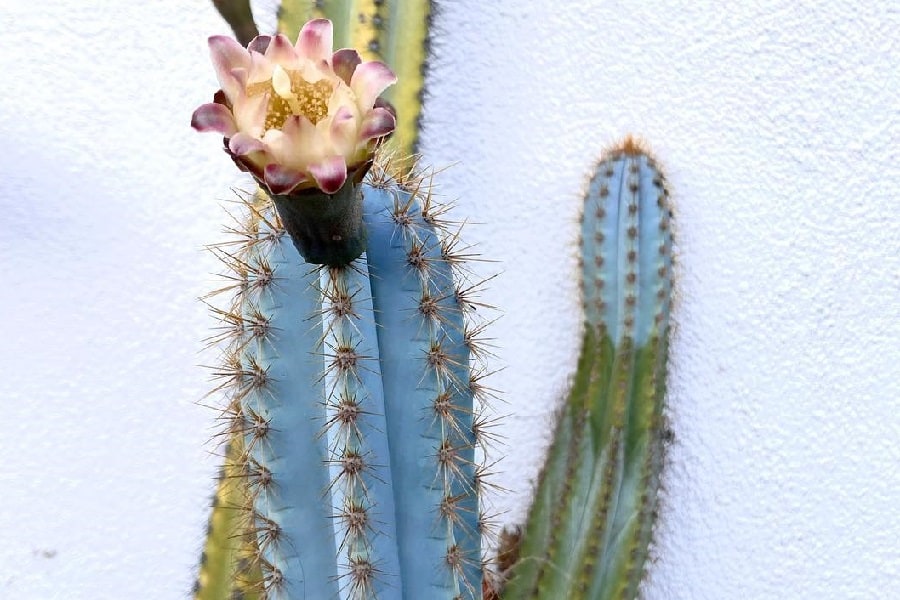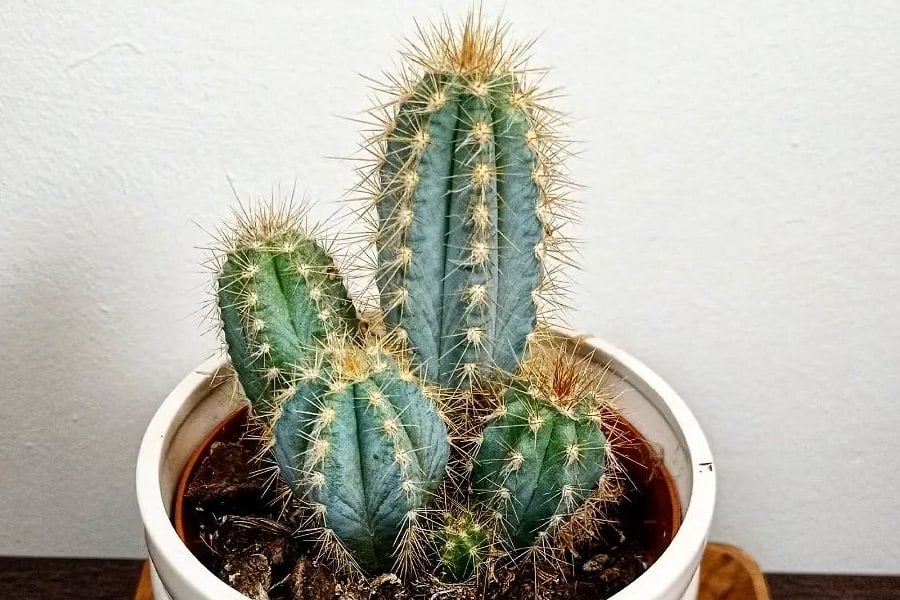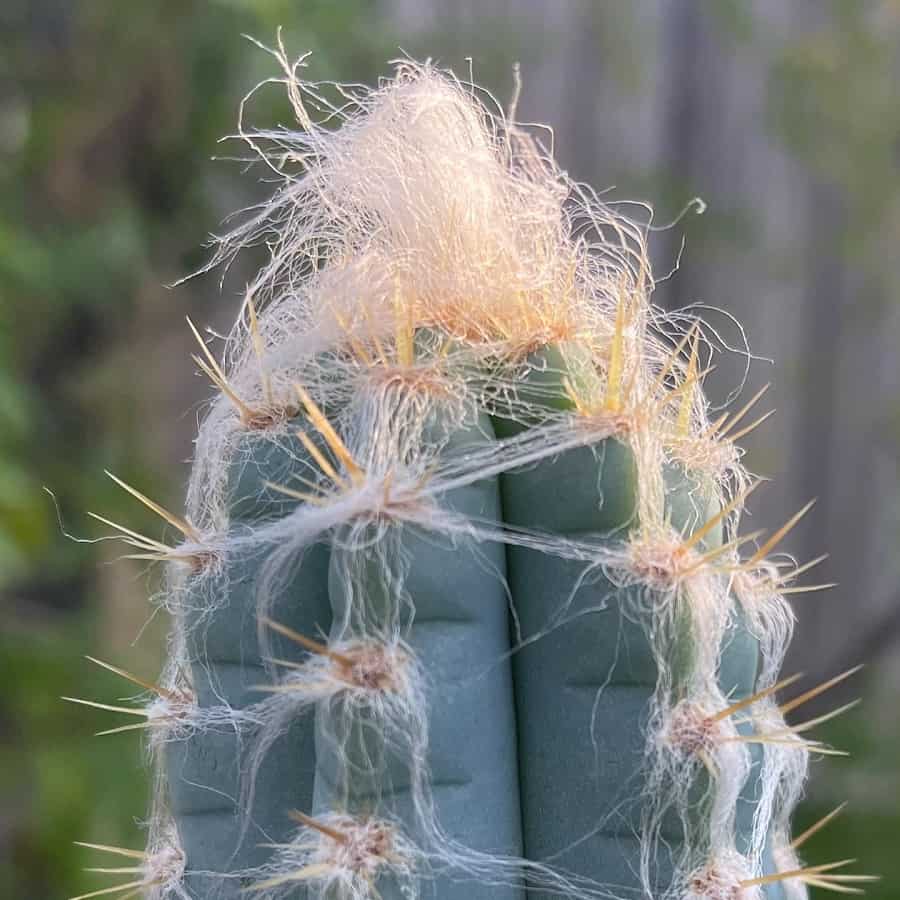Pilosocereus pachycladus: Characteristics and Care
Pilosocereus pachycladus, also known as the blue columnar cactus, is an eye-catching plant that can reach up to 100 feet tall! Its thick branches are around 4 inches wide, and the trunk has a unique silvery-blue color.
The trunk grows many vertical branches covered with ridges and areoles (small bumps) along the edges. Plenty of golden yellow spines sprout from these areoles, giving the cactus a striking appearance.

Related Post:
44 Types of Pilosocereus With Pictures
Contents
Pilosocereus pachycladus Care
This cactus requires some special care to thrive. Here’s what you need to know:
Light
Pilosocereus pachycladus loves lots of sunlight. Aim for at least 12 hours of direct sunlight every day. If growing it indoors, place it on a sunny windowsill. These cacti do best in hot, tropical climates (USDA hardiness zones 9b to 11b). Bring them inside if temperatures drop below freezing in winter.
Water
This thirsty cactus needs a good drink once a week. Water it thoroughly, but let the soil dry out before watering again. Too much water can cause root rot. During spring and summer (the growing season), water regularly. In winter when it’s dormant, you can water once or twice if needed.

Soil
Plant your Pilosocereus pachycladus in well-draining soil. A cactus or potting mix works great. Adding sand or perlite helps the soil stay dry.
Fertilizer
This cactus doesn’t need much extra food. During the growing season, feed it once or twice with a balanced fertilizer (equal parts nutrients). Dilute it a bit, and you can also use compost.
Pests and Diseases
Watch out for mealybugs, scales, mites, root rot from overwatering, bruises, and yellow spots. Use pesticides, rubbing alcohol, or hose them off if caught early.

Pilosocereus pachycladus Propagation
The easiest way to grow more of these cacti is from cuttings. Here’s how:
- Take cuttings from a mature plant’s top branches when it’s tall enough.
- Cut the branches into smaller pieces.
- Plant the cuttings in a well-draining container with cactus/potting mix.
- Push them in and cover with soil. Lightly water.
- Once roots form, keep providing the right care, and it will grow and bloom!
While slower, you can also try sprouting seeds. With proper care, this eye-catching cactus will surely impress!
